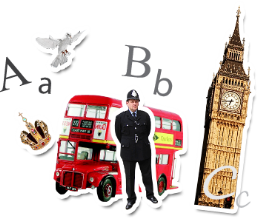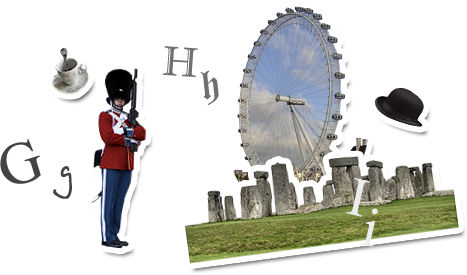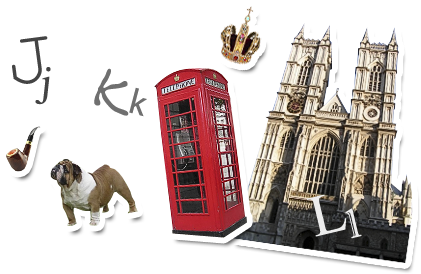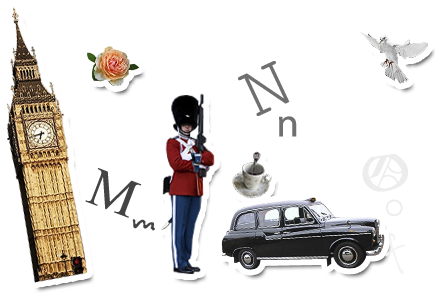The United States of America
 |
The U.S. flag has undergone many changes since the first official flag of 1777. On June 14, 1777, the Continental Congress passed the first Flag Act, which said that the flag would be made up of thirteen alternating red and white stripes and thirteen white stars on a blue field. Stars have been added to the flag as new states join the union. Currently, the flag contains 50 stars, which represent the 50 states of the United States of America, and the 13 stripes represent the thirteen British colonies that declared independence from the Kingdom of Great Britain, and became the first states in the Union. Nicknames for the flag include the Stars and Stripes, Old Glory, and the Star-Spangled Banner.
 Blue: Signifies Vigilance, perseverance, and justice. Blue: Signifies Vigilance, perseverance, and justice. |
|
The United States of America is a large country in North America, often referred to as the "USA", the "US", the "United States", "America", or simply "the States". Home to the world's third-largest population, with over 318 million people, it includes both densely populated cities with sprawling suburbs and vast, uninhabited natural areas. With its history of mass immigration dating from the 17th century, it is a "melting pot" of cultures from around the world and plays a dominant role in the world's cultural landscape. It's famous for its wide array of popular tourist destinations, ranging from the skyscrapers of Manhattan and Chicago, to the natural wonders of Yellowstone and Alaska, to the warm, sunny beaches of Florida, Hawaii and Southern California. |
 |
Washington, D.C.
|
The National Mall. |
Washington, D.C., formally the District of Columbia and commonly referred to as "Washington", "the District", or simply "D.C.", is the capital of the United States. The signing of the Residence Act on July 16, 1790, approved the creation of a capital district located along the Potomac River on the country's East Coast. |
|
The White House. |
The Oval Office. |
|
|
The United States Capitol. |
The Library of Congress. |
|
|
|
The National Museum of Natural History. |
|
|
The National Museum of Women in the Arts. |
The International Spy Museum. |
Government and politics
The United States is a federal republic comprising 50 states, the District of Columbia (Washington DC), 16 territories, and numerous Indian Reservations. The federal government derives its power from the Constitution of the United States, the oldest written constitution in the world in continuous use. Each state is considered to be a separate sovereign, maintains its own constitution and government, and retains considerable autonomy within the federation. State citizens enjoy the power to vote for federal representatives, federal senators, and the federal President.
The federal government consists of the President of the United States and his administration acting as the executive branch, the United States Congress acting as the legislative branch, and the Supreme Court of the United States and lower federal courts acting as the judicial branch. State government structures are organized similarly, with governors, legislatures, and judiciaries.
The President of the United States is elected indirectly every four years by the people via an electoral college, and serves as both head of government and head of state.
The United States has two major political parties at both the federal and state levels, the Republican Party and the Democratic Party.
Geography
The United States is bounded by the Atlantic Ocean to the east and the Pacific Ocean to the west, with much of the population living on the two coasts. Its land borders are shared with Canada to the north, and Mexico to the south. The US also shares maritime borders with Russia, Cuba, and the Bahamas.
The country has three major mountain ranges. The Appalachians extend from Canada to the state of Alabama, a few hundred miles west of the Atlantic Ocean. They are the oldest of the three mountain ranges and offer spectacular sightseeing and excellent camping spots. The Rockies are, on average, the highest in North America, extending from Alaska to New Mexico, with many areas protected as national parks. They offer hiking, camping, skiing, and sightseeing opportunities. The Sierra Nevada chain runs from California up into Canada. This mountain range hugs the entire west coast of the United States.
|
The Great Lakes. |
The Great Lakes define much of the border between the eastern United States and Canada. The five lakes span hundreds of miles, bordering the states of Minnesota, Wisconsin, Illinois, Indiana, Michigan, Ohio, Pennsylvania and New York. They are the second-largest bodies of freshwater in the world, after the polar ice caps. |
|
The southwestern portions of the USA in eastern California, Arizona, Nevada, and much of southern New Mexico are rugged and very arid landscapes complete with wind-shaped desert sand dunes like White Sands New Mexico. Natural areas include vast areas of desert untouched by humans. Camping and hiking through the majestic landscapes of the Southwest is a big vacation draw for many Americans. |
Grand Canyon National Park. |
Climate
The climate is temperate in much of the northern and central regions, with the deep southern areas along the Gulf Coast and Florida being subtropical. The Great Plains are dry, flat and grassy, turning into arid desert in the far West, while much of California is Mediterranean, and arid desert in its southwestern areas. Hawaii and far South Florida are tropical.








 White: Signifies purity and innocence.
White: Signifies purity and innocence. Red: Signifies valor and bravery.
Red: Signifies valor and bravery.











